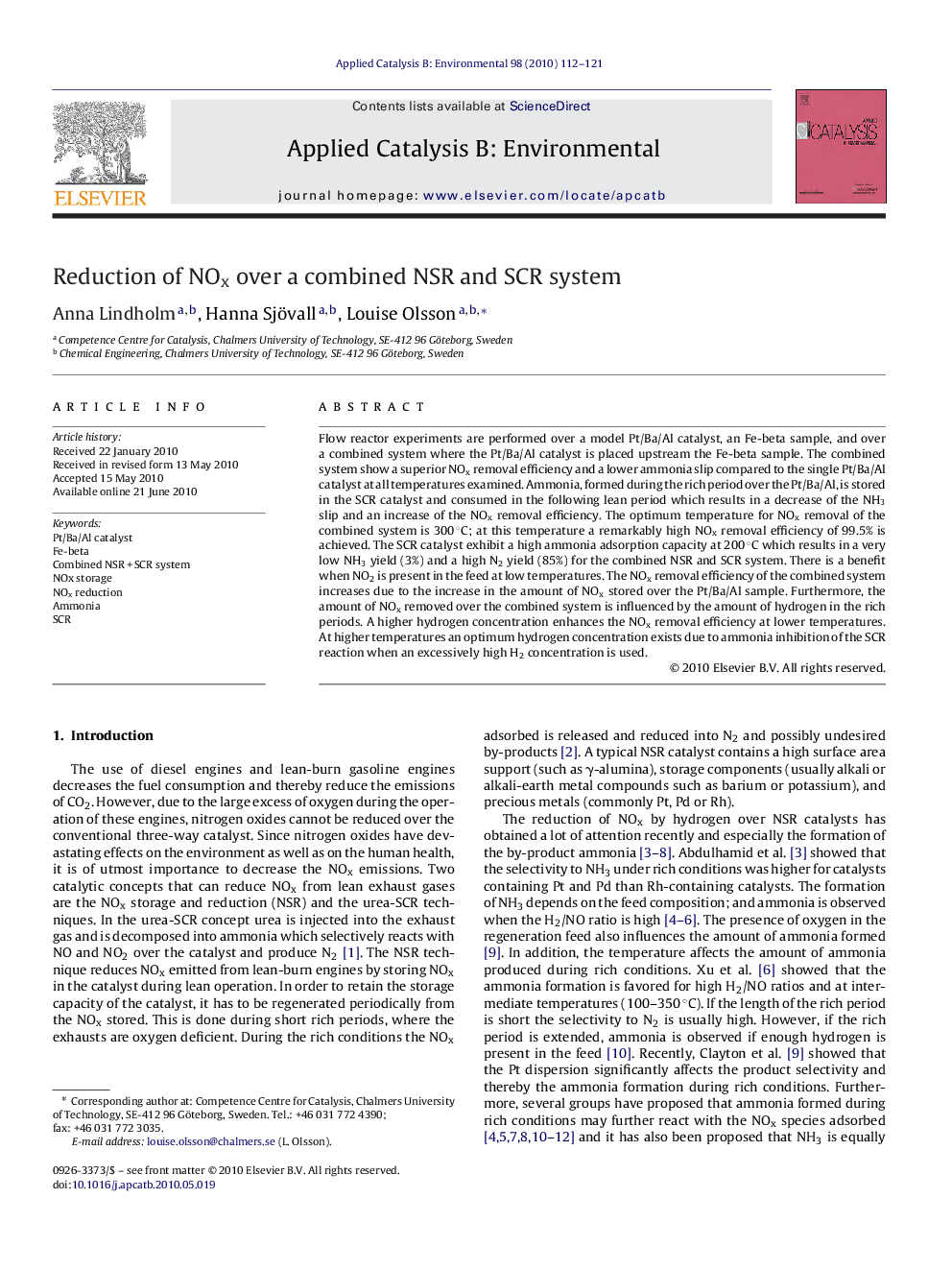| Article ID | Journal | Published Year | Pages | File Type |
|---|---|---|---|---|
| 47254 | Applied Catalysis B: Environmental | 2010 | 10 Pages |
Flow reactor experiments are performed over a model Pt/Ba/Al catalyst, an Fe-beta sample, and over a combined system where the Pt/Ba/Al catalyst is placed upstream the Fe-beta sample. The combined system show a superior NOx removal efficiency and a lower ammonia slip compared to the single Pt/Ba/Al catalyst at all temperatures examined. Ammonia, formed during the rich period over the Pt/Ba/Al, is stored in the SCR catalyst and consumed in the following lean period which results in a decrease of the NH3 slip and an increase of the NOx removal efficiency. The optimum temperature for NOx removal of the combined system is 300 °C; at this temperature a remarkably high NOx removal efficiency of 99.5% is achieved. The SCR catalyst exhibit a high ammonia adsorption capacity at 200 °C which results in a very low NH3 yield (3%) and a high N2 yield (85%) for the combined NSR and SCR system. There is a benefit when NO2 is present in the feed at low temperatures. The NOx removal efficiency of the combined system increases due to the increase in the amount of NOx stored over the Pt/Ba/Al sample. Furthermore, the amount of NOx removed over the combined system is influenced by the amount of hydrogen in the rich periods. A higher hydrogen concentration enhances the NOx removal efficiency at lower temperatures. At higher temperatures an optimum hydrogen concentration exists due to ammonia inhibition of the SCR reaction when an excessively high H2 concentration is used.
